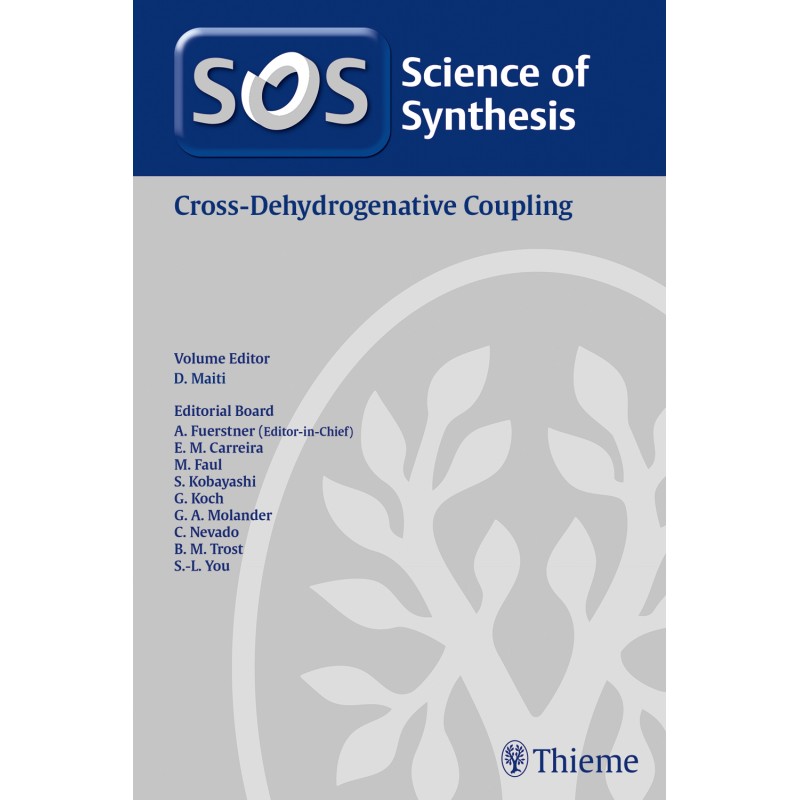- Reduced price

Order to parcel locker

easy pay


 Delivery policy
Delivery policy
Choose Paczkomat Inpost, Orlen Paczka, DHL, DPD or Poczta Polska. Click for more details
 Security policy
Security policy
Pay with a quick bank transfer, payment card or cash on delivery. Click for more details
 Return policy
Return policy
If you are a consumer, you can return the goods within 14 days. Click for more details
Comprehensive overview of strategies and applications of cross-dehydrogenative coupling methods
Cross-Dehydrogenative Coupling (CDC) represents a type of coupling reaction for the construction of a C-C bond or C-heteroatom (C-X) bond directly from C-H and X-H bonds present in the precursors. Since this genre of coupling reaction obviates the need for substrate prefunctionalization, it has an added advantage of high efficiency, atom economy, and environmental friendliness. CDC reactions are triggered by transition-metal catalysts or simply by an oxidants, or by either photocatalysis or electrocatalysis, leading to a hetero- or homo-coupled products with the removal of two hydrogens. Over the years, several CDC strategies have been developed that has made it possible to construct bonds between carbon-hydrogen (C-H) bonds of diverse hybridization. CDC has also streamlined the synthesis and functionalization of various nitrogen, oxygen, and sulfur-containing heterocycles. This volume features a series of chapters systematically covering methods and strategies in CDC, organized primarily on the type of bond being formed. In addition, particular aspects of CDC are highlighted in devoted chapters on topics such as mechanistic aspects, electrochemical and flow methods, transformations in water, natural product synthesis, and enantioselective protocols.
Data sheet
1 Introduction
2 Cross-Dehydrogenative Coupling: Development and Perspectives
3 Mechanistic Aspects of Transition-Metal-Catalyzed and Non-Transition-Metal-Mediated Cross-Dehydrogenative Coupling
4 Cross-Dehydrogenative Coupling Involving Alkynes for C(sp2)—C(sp) Bond Formation
5 (Het)Arene/(Het)Arene Cross-Dehydrogenative Coupling for C(sp2)—C(sp2) Bond Formation
6 (Het)Arene/Alkene Cross-Dehydrogenative Coupling for C(sp2)—C(sp2) Bond Formation
7 Alkene/Alkene Cross-Dehydrogenative Coupling for C(sp2)—C(sp2) Bond Formation
8 Cross-Dehydrogenative Coupling Involving Aldehydes for C(sp2)—C(sp2) Bond Formation
9 (Het)Arene/Alkane Cross-Dehydrogenative Coupling for C(sp2)—C(sp3) Bond Formation
10 Alkene/Alkane Cross-Dehydrogenative Coupling for C(sp2)—C(sp3) Bond Formation
11 Cross-Dehydrogenative Coupling for C(sp3)—C(sp3) Bond Formation
12 Electrochemical C—C Bond Formation through Cross-Dehydrogenative Coupling
13 C—C Bond Formation in Flow Systems Through Cross-Dehydrogenative Coupling
14 C—C Bond Formation in Water through Cross-Dehydrogenative Coupling
15 C—C Bond Formation through Cross-Dehydrogenative Coupling in Natural Product and API Synthesis
16 C—N Bond Formation through Cross-Dehydrogenative Coupling
17 C—O Bond Formation through Cross-Dehydrogenative Coupling
18 Heteroatom—Heteroatom Bond Formation through Cross-Dehydrogenative Coupling
19 Enantioselective Cross-Dehydrogenative Coupling
